October 18, 2025

The article titled "10 Key Extinction Examples and Their Impact on Biodiversity" presents a compelling examination of significant extinction events throughout Earth's history and their profound effects on biodiversity. It underscores how pivotal events, such as the Permian-Triassic and Cretaceous-Paleogene extinctions, drastically reshaped ecosystems and laid the groundwork for future evolutionary developments.
Understanding these historical occurrences is crucial for addressing contemporary biodiversity challenges, as they provide essential insights into the resilience and adaptability of life on our planet. By reflecting on these events, we can better comprehend the urgency of preserving biodiversity today.
The history of life on Earth is marked by dramatic extinction events that have profoundly reshaped the planet's biodiversity. From the Great Dying of the Permian-Triassic to the catastrophic asteroid impact that ended the reign of the dinosaurs, these pivotal moments underscore the fragility and resilience of ecosystems. This exploration delves into ten key extinction examples, highlighting their causes and the lasting impacts on biodiversity.
As humanity confronts a modern extinction crisis driven by climate change and habitat loss, understanding these historical events becomes crucial. What lessons can we draw from the past to inform current conservation efforts and safeguard the future of our planet's diverse life forms?
The demand for Board Certified Behavior Analysts (BCBAs) is projected to surge by 25% by 2026. Hire ABA acts as a crucial bridge between BCBAs and employers in this dynamic job market. By simplifying the hiring process, the platform ensures that qualified professionals can secure positions that align with their skills and career aspirations.
But how can you navigate this evolving landscape? Hire ABA prioritizes operational efficiency, enhancing the experience for job seekers while assisting employers in swiftly finding the right talent. This specialized recruitment approach is essential in addressing current trends in healthcare, where the need for BCBAs is increasingly recognized, particularly in schools, clinics, and private practices.
Consider this: job listings for assistant behavior analysts have risen by an impressive 131% from 2023 to 2024. This significant growth underscores the platform's effectiveness in job placement. Moreover, Hire ABA provides personalized guidance throughout the entire process, from application to negotiation, ensuring that BCBAs are matched with roles that align with their expertise and career goals.
As these trends illustrate, tailored recruitment solutions are vital for navigating the complexities of Applied Behavior Analysis (ABA) therapy. Are you ready to streamline your hiring process and secure the best talent? With Hire ABA, you can confidently address your recruitment challenges and position your organization for success.

The Permian-Triassic extinction examples, often referred to as 'The Great Dying,' occurred approximately 252 million years ago, marking it as the most severe extinction event in Earth's history. This catastrophic event serves as one of the extinction examples, leading to the disappearance of around 90% of oceanic organisms and 70% of land-dwelling vertebrates. What could have caused such a dramatic change? The leading theories suggest:
This occurrence drastically reshaped the biodiversity of our planet. In the aftermath, it paved the way for the dominance of new species and ecosystems. The implications of this extinction, along with various extinction examples, are profound, prompting us to reflect on the resilience of life and the ever-changing dynamics of our environment. Understanding these historical events is crucial as we navigate contemporary challenges in biodiversity and conservation.
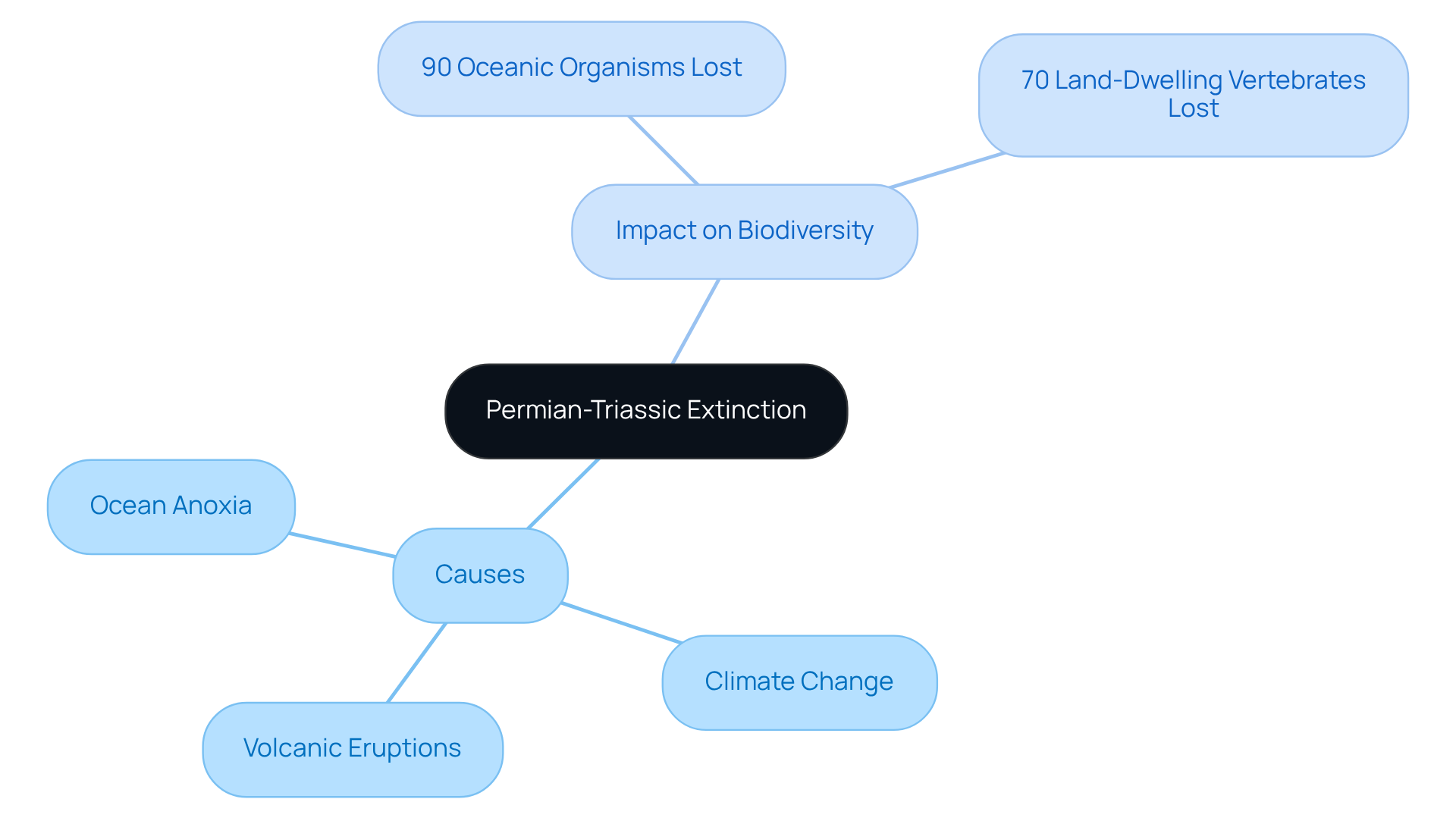
The Cretaceous-Paleogene extinction phenomenon, occurring approximately 66 million years ago, is notably recognized for providing extinction examples, especially regarding non-avian dinosaurs. This catastrophic event, believed to have been triggered by a massive asteroid impact, led to dramatic climate shifts and the collapse of ecosystems. An astonishing 75% of all life forms on Earth vanished during this period, providing significant extinction examples that paved the way for mammals to emerge and diversify in subsequent epochs. Understanding this pivotal moment in Earth's history is crucial for grasping the evolution of life as we know it today.

The Holocene event, often referred to as the sixth mass die-off, provides extinction examples characterized by the rapid extinction of species driven by human activities such as habitat destruction, pollution, and climate change. Current estimates indicate that extinction examples show species are disappearing at rates 1,000 to 10,000 times higher than natural background levels. This alarming trend raises critical concerns about global biodiversity and the stability of ecosystems. Immediate and effective conservation measures are essential to combat this escalating crisis.
What steps will you take to protect our planet's biodiversity?
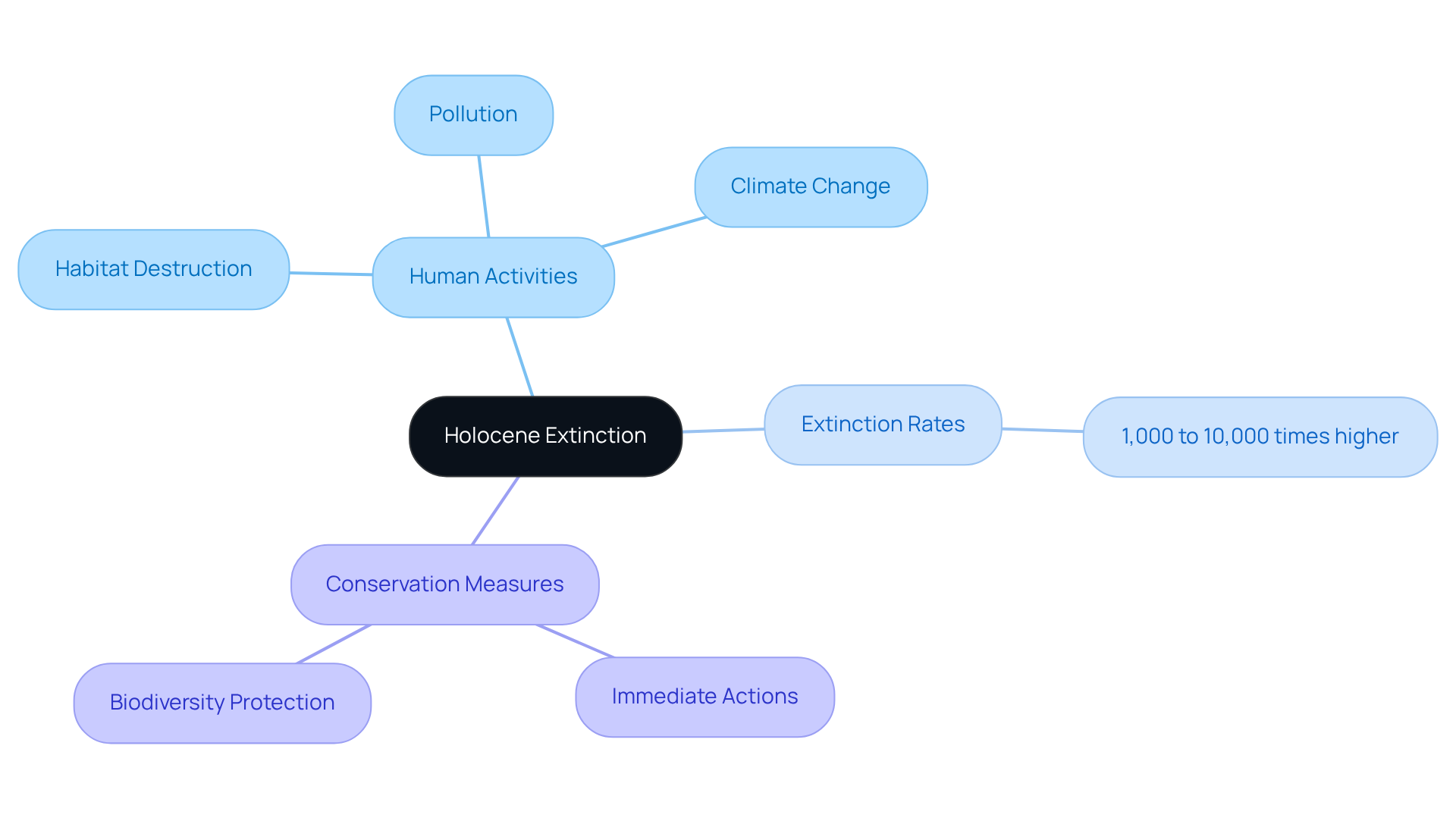
The Ordovician die-off, occurring approximately 445 million years ago, is one of the earliest significant extinction examples in Earth's history, resulting in the loss of around 85% of marine species. What led to such a dramatic decline? A combination of climate change, glaciation, and fluctuations in sea level played crucial roles. The aftermath of the Ordovician die-off not only reshaped marine ecosystems but also set the stage for remarkable evolutionary advancements, including the emergence of fish and other vertebrates. This pivotal moment underscores the dynamic nature of life on Earth and its capacity for recovery and adaptation.

The Late Devonian extinction examples, which transpired approximately 372 million years ago, are marked by a sequence of extinction events that resulted in the loss of around 75% of species. This era experienced profound transformations in marine ecosystems, particularly within coral reefs and fish populations. The causes are believed to include:
These factors serve as extinction examples that culminate in a significant shift in Earth's biodiversity and pave the way for the emergence of terrestrial life.
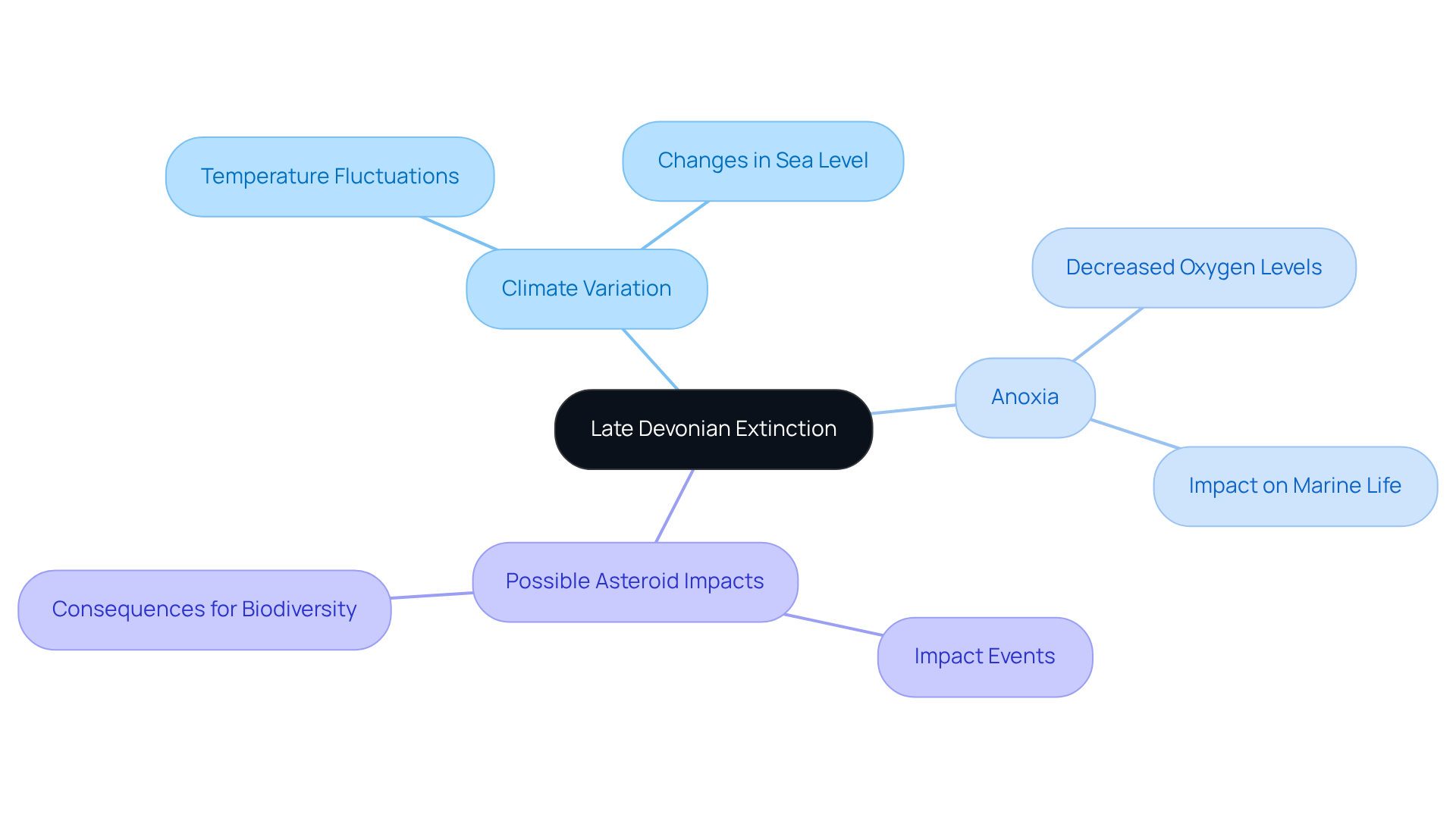
The Triassic-Jurassic mass die-off, occurring approximately 201 million years ago, represents a pivotal moment in Earth's history. This event is believed to have been instigated by substantial volcanic activity and climate fluctuations, providing extinction examples of around 80% of species. In the aftermath, dinosaurs emerged as the dominant life forms, thriving and diversifying throughout the Mesozoic era. This transformation not only reshaped ecosystems but also set the stage for the evolution of complex life forms that followed.
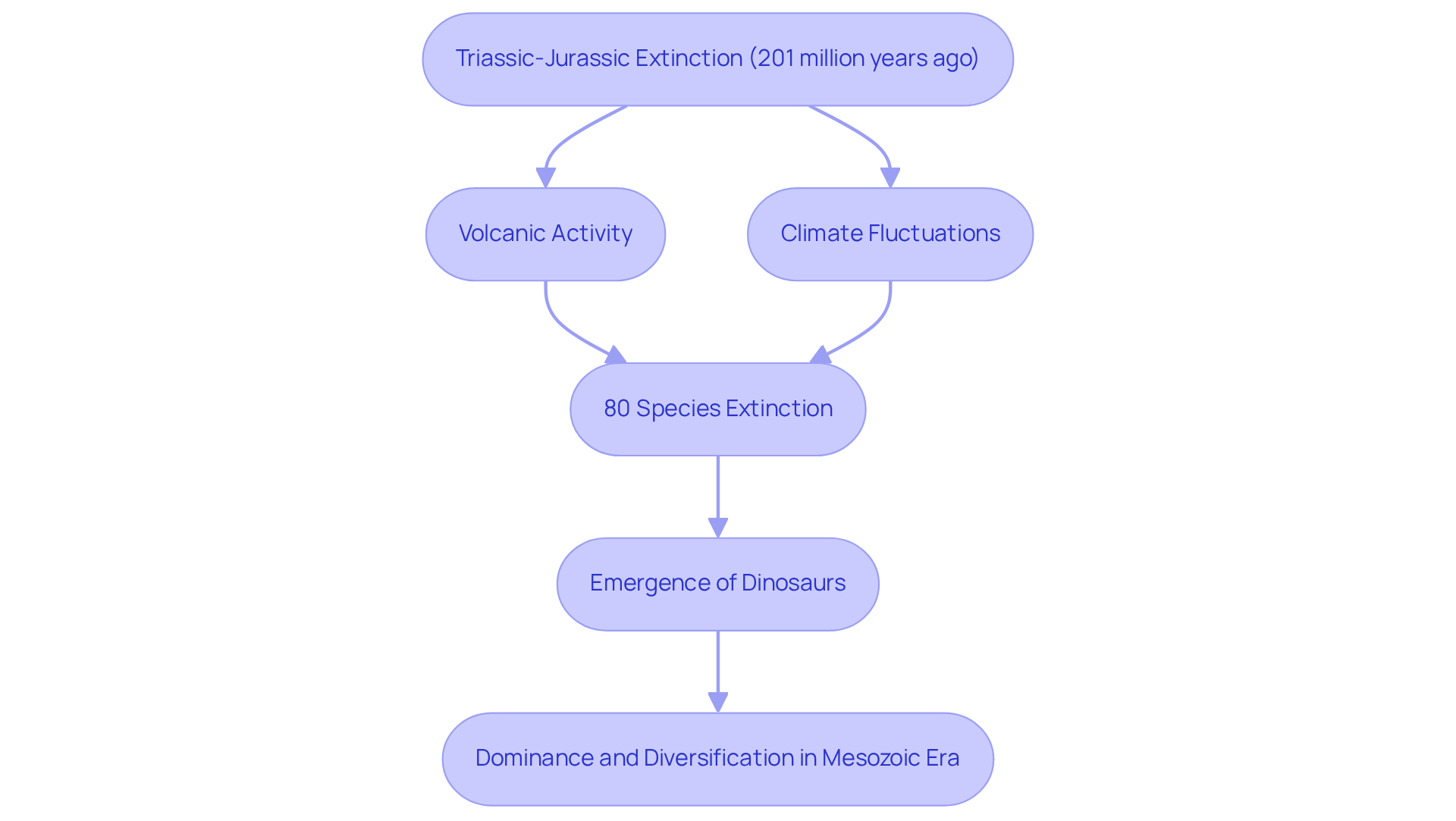
Global warming has long been a dominant force driving species loss, profoundly impacting the trajectory of life on Earth. The Permian-Triassic event is one of the extinction examples, marking a significant shift in biodiversity as climate changes resulted in extensive habitat loss and ecosystem transformations.
Today, the ongoing Holocene extinction examples are exacerbated by human-induced climate changes, posing unprecedented threats to biodiversity. Research indicates that human activities are accelerating these trends, increasing the vulnerability of various organisms.
Climate researchers emphasize the historical significance of climate change on biodiversity, underscoring the urgent need for action to mitigate these effects and safeguard the future of at-risk species.
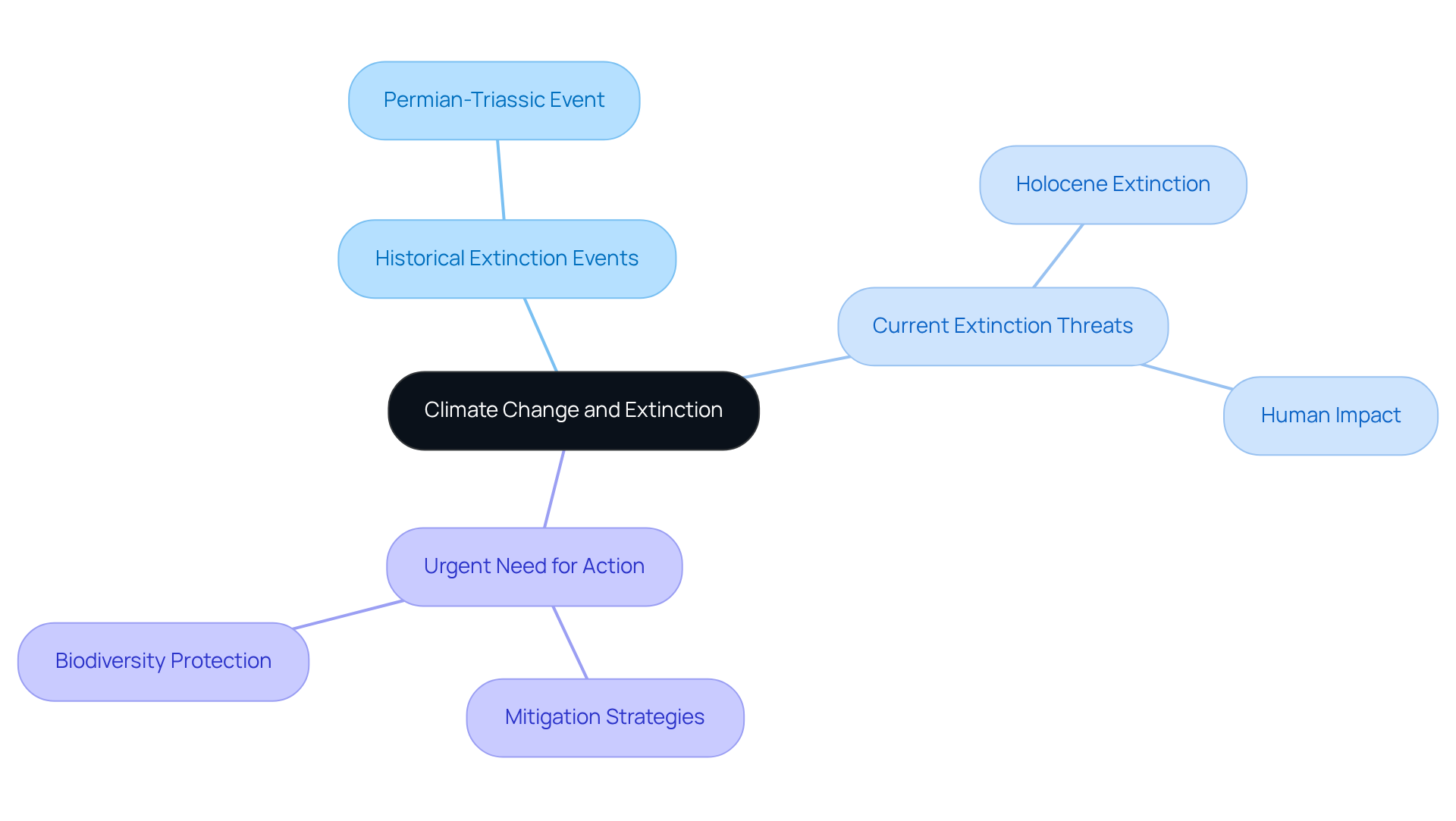
Coextinction examples illustrate the phenomenon where the loss of one organism leads to the extinction of others that depend on it. This interconnectedness underscores the fragility of ecosystems and the cascading consequences of biodiversity loss. For example, extinction examples such as the decline of a vital organism can disrupt food networks, resulting in further biodiversity losses. Recognizing these connections is essential for developing effective conservation strategies that aim to safeguard entire ecosystems rather than focusing solely on individual organisms.
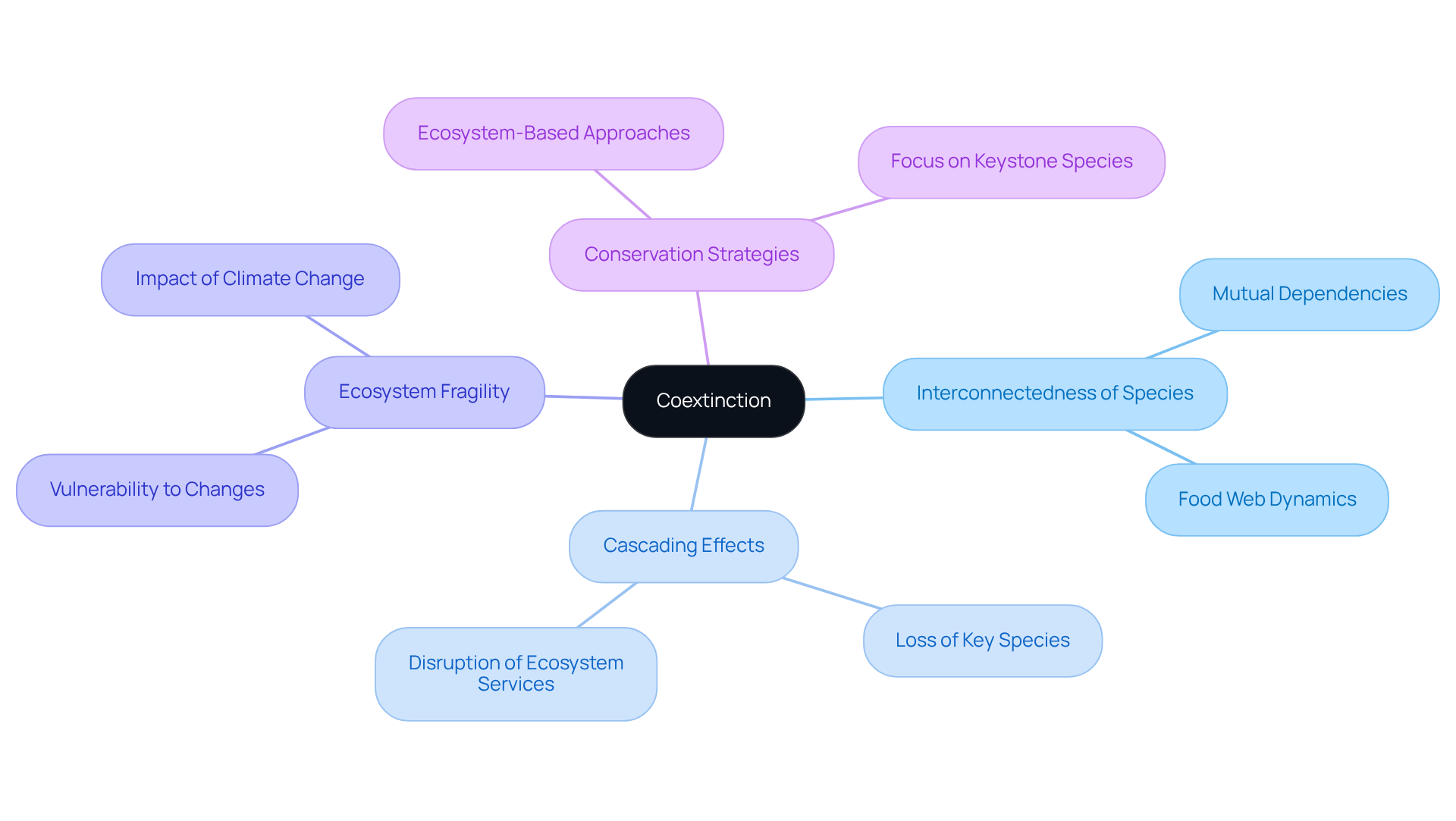
Conservation efforts are essential in preventing future extinctions and preserving biodiversity. The strategies employed include:
Notable successes, such as the recovery of the American bald eagle and the gray wolf, illustrate the potential for positive outcomes when effective conservation measures are applied. By prioritizing biodiversity and ecosystem health, we can collectively strive towards a sustainable future for all species.
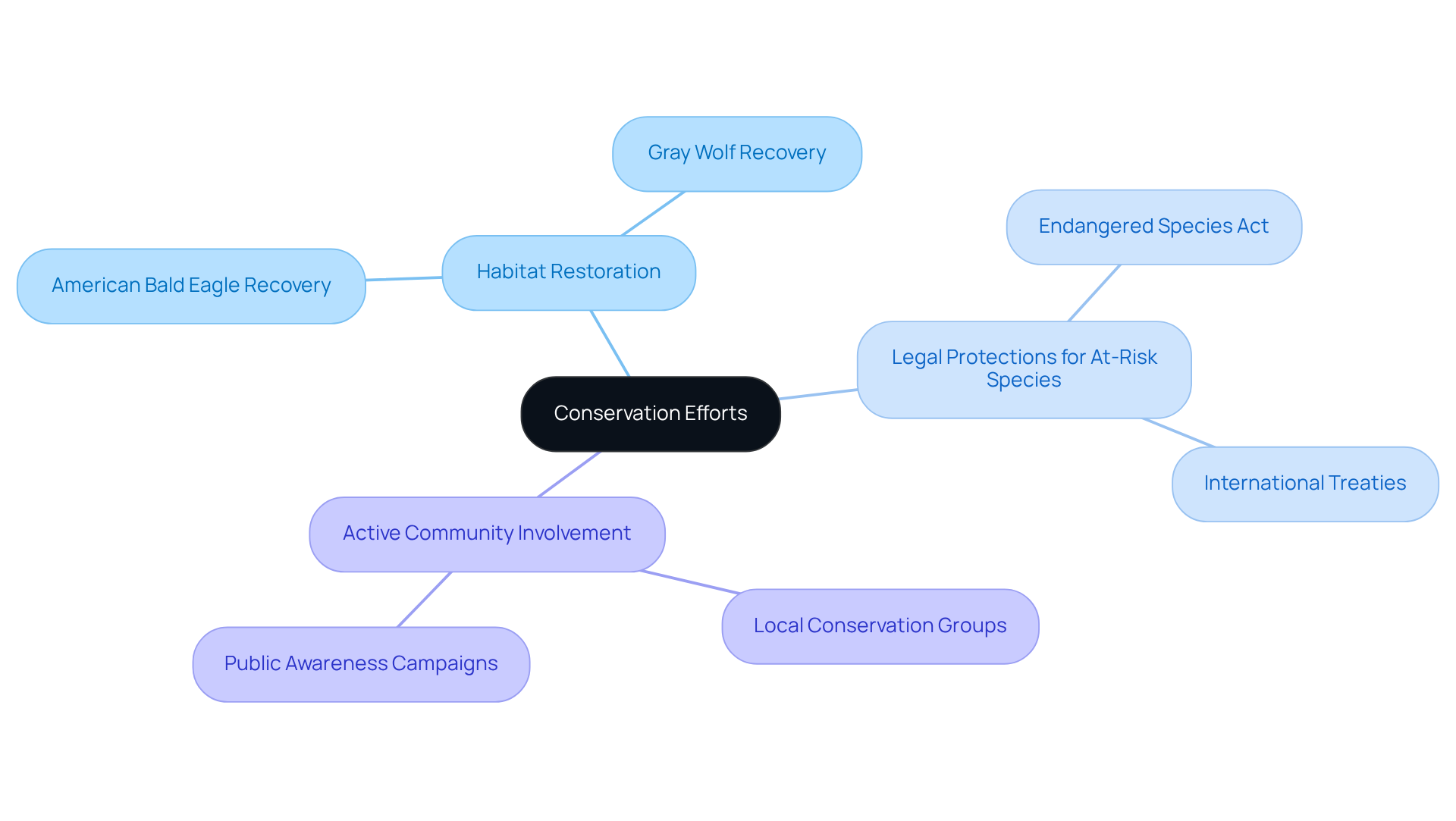
The exploration of extinction events throughout Earth's history reveals the profound impact these occurrences have had on biodiversity. From the catastrophic Permian-Triassic event to the ongoing Holocene extinction, each example underscores the delicate balance of life and the consequences of environmental upheaval. The interconnectedness of species and ecosystems highlights the fragility of biodiversity, emphasizing the urgent need for action to address the threats posed by human activity and climate change.
Key insights illustrate how past extinction events have shaped the evolution of life on Earth, creating opportunities for new species to thrive while simultaneously wiping out countless others. Understanding these historical events not only provides context for current biodiversity challenges but also reinforces the importance of conservation efforts. Without proactive measures, the alarming rates of species loss may continue unabated, leading to irreversible damage to ecosystems.
In light of these insights, it is imperative to prioritize conservation strategies that protect vulnerable species and restore ecosystems. By fostering greater awareness of the interconnectedness of life and the consequences of extinction, individuals and communities can contribute to meaningful change. Collective efforts in conservation can pave the way for a more sustainable future, ensuring the resilience of biodiversity for generations to come.
What is Hire ABA and what role does it play in the job market for Board Certified Behavior Analysts (BCBAs)?
Hire ABA is a platform that connects Board Certified Behavior Analysts (BCBAs) with job opportunities, acting as a bridge between qualified professionals and employers in a changing job market.
What is the projected demand for BCBAs by 2026?
The demand for BCBAs is projected to surge by 25% by 2026.
How does Hire ABA simplify the hiring process for BCBAs and employers?
Hire ABA enhances operational efficiency, making it easier for job seekers to find positions that match their skills and for employers to quickly identify the right talent.
What notable trend has been observed in job listings for assistant behavior analysts?
Job listings for assistant behavior analysts have risen by 131% from 2023 to 2024.
What kind of support does Hire ABA provide to BCBAs during the hiring process?
Hire ABA offers personalized guidance throughout the entire process, from application to negotiation, to ensure BCBAs are matched with suitable roles.
Why are tailored recruitment solutions important in the field of Applied Behavior Analysis (ABA)?
Tailored recruitment solutions are essential for navigating the complexities of ABA therapy, especially given the increasing recognition of the need for BCBAs in various settings like schools, clinics, and private practices.
What was the Permian-Triassic extinction, and what impact did it have on biodiversity?
The Permian-Triassic extinction, known as 'The Great Dying,' occurred about 252 million years ago and resulted in the disappearance of around 90% of oceanic organisms and 70% of land-dwelling vertebrates, drastically reshaping biodiversity.
What are the leading theories regarding the causes of the Permian-Triassic extinction?
The leading theories suggest that massive volcanic eruptions, significant climate change, and ocean anoxia were primary factors contributing to the extinction.
What was the Cretaceous-Paleogene extinction, and what was its significance?
The Cretaceous-Paleogene extinction occurred approximately 66 million years ago and is recognized for the extinction of non-avian dinosaurs, leading to the disappearance of 75% of all life forms on Earth, which allowed mammals to emerge and diversify.
What event is believed to have triggered the Cretaceous-Paleogene extinction?
The Cretaceous-Paleogene extinction is believed to have been triggered by a massive asteroid impact, resulting in dramatic climate shifts and ecosystem collapse.
Our expert recruitment strategies and AI-driven sourcing ensure that you receive top-notch candidates quickly, without compromising on quality. Whether you’re looking for BCBAs, Clinical Directors, or RBTs, we’ve got you covered.